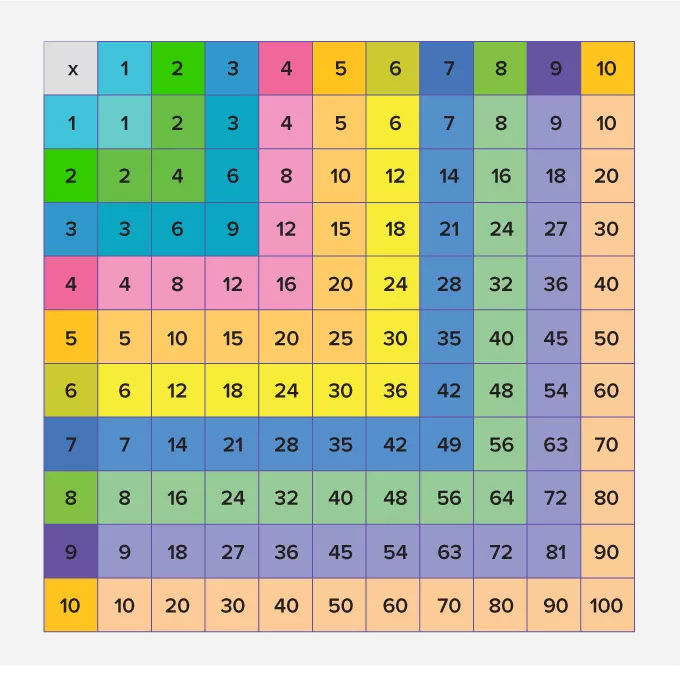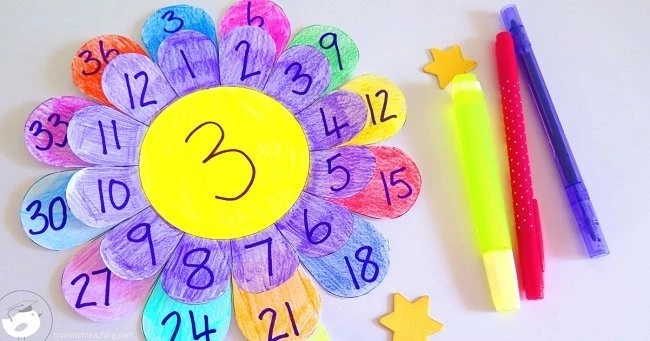Learners are already at the primary levels of mathematics; therefore, they should already be familiar with the fundamental mathematical operations of addition, subtraction, multiplication, and division.
Unfortunately, there are a number of situations in which children have difficulty making the transition from subtracting and adding to multiplying and dividing when they are required to do so in their math coursework.
The primary issue is that when youngsters learn multiplication and division, they often have less time to practice and become interested in those concepts than when they are learning addition and subtraction.
Effective Multiplication Methods
There are several mathematical ideas that are waiting to be worked on that need multiplication and division. Some of them are explained below.
Use of the Multiplication Sheet

This is an ancient method, yet it still produces excellent results. The first thing you will need to do is download whizz education’s convenient timetable sheet. After that step is finished, you and your kid should go through it together, filling in each individual box. The next object you need to do is choose a spot for the finished chart where your youngster can see it often. [1]
Last but not least, schedule a recurrent time for you and your kid to sit down together and go over a certain set of multiplication tables in a relaxed, stress-free manner, maybe just before dinnertime. Keep in mind that the likelihood of kids learning their multiplication tables increases with the frequency with which they see and practice them.
Introduce New Ideas via Visuals
Comprehending something as abstract as numbers do not come naturally to all youngsters. Don’t waste your time irritating to explain things to them using numbers if they can’t grasp what you mean.
Let the manipulation and tools do the job for you first; then, you can worry about wasting your energy and time on words. After they have added an understanding of the idea, you may then begin to use the number.
Firm Grasp of the Concept
Because there are so many ideas that children need to understand at a young age, multiplication facts are often one of the first things that children need to learn how to grasp.
When youngsters who are not strong in mathematics are forced to grasp multiplication numbers so quickly, it will undoubtedly be a nightmarish experience for them. They have no understanding of the concept at all; thus, it will be challenging for them to adjust to the new ideas that are being presented.
Make an effort to ensure that they fully comprehend and take pleasure in the topic in order to prevent them from being exhausted. That is, they have a duty to be aware that this is an idea with significance. [2]
Remember Series in Order
Children will quickly get overwhelmed and exhausted if they are not given breaks from learning multiplication facts. The situation will be the same for grownups. Therefore, you should never attempt to conceal all of the information at once.
Beginning with 0 and 1, multiply them together. They will be relieved and self-assured after they have mastered those numbers.
- Please provide them with some amount of time to practice with the first.
- Obtain the additional products of multiplication at a time progressively.
- Always make time for them to practice, whether it is verbally or in writing.
Review Completed Series
Before starting to teach the children the new method of multiplication, it is important to first have the youngsters review the prior process of multiplication, both in order and at random. The following is an example of how to memories sequence is based on the materials:
- Explain the notion of multiplication by two or adding two integers together.
- Perform oral practice of counting by doubles in succession (several days or even a couple of weeks)
- Randomly do oral practice using double-digit digits (several days or even a couple of weeks)
- Practice your writing skills.
- Explain the multiplication by 3
- Perform three times through the process of oral multiplication exercise in succession (several days or even a couple of weeks)
- Perform random oral drills on the multiplication of three (several days or even a couple of weeks)
- Intersperse the material with problems using multiplication by 0, 1, and 2
The reviews are not only for remembering but also for exercising the reflex in responding to questions; thus, it is important that you pay attention to both of these aspects.
Use Some Interesting Games
It would be wonderful if you could utilize the internet connection for the practice of the youngsters. If you do not already have any, you should make an effort to acquire or develop such games or board games that might assist youngsters in practicing multiplication. Children may become more invested in their educational experiences if they are allowed to play games. The irrelevant information will be forgotten.
Multiplication Flower

One for imaginative young people. The first step for the children in this exercise is to draw a flower and then write a number between 2 and 12 in the center of the blossom. After that, they draw 12 petals around the center, with each petal holding a number between 1 and 12.
In the last stage, you will need to design another set of 12 petals, each of which will have the central number multiplied by the number of petals in the inner circle.
Set Multiplication War
A few weeks ago, we spoke about five different engaging board games that may help youngsters learn arithmetic. Now that we’ve discovered this card game, we can make studying our multiplication tables more entertaining. The main objective of such a game is to be the first of two players to draw a card from a deck.
After that, they turn over their cards, and the person who is the first to properly predict the sum of the two cards multiplied together is the one who gets to add the cards to their winning pile. For instance, if a three of hearts and a seven of diamonds are turned over, the person who is the first to declare 21 wins and gets to retain both cards
At the conclusion of the game, the winner is the player who has amassed the most number of cards in their winning pile.
